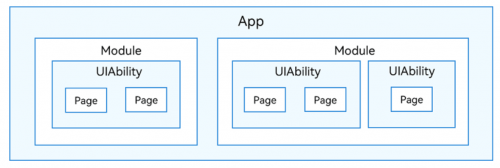**Python輸出以空格隔開**

Python是一種簡(jiǎn)潔而強(qiáng)大的編程語(yǔ)言,廣泛應(yīng)用于各個(gè)領(lǐng)域。在Python中,我們可以使用print函數(shù)來輸出內(nèi)容。而輸出以空格隔開是一種常見的需求,可以通過多種方式實(shí)現(xiàn)。本文將介紹如何使用Python輸出以空格隔開,并擴(kuò)展相關(guān)問答。
**Python輸出以空格隔開的方法**
在Python中,我們可以使用多種方法輸出以空格隔開的內(nèi)容。下面是幾種常見的方法:
1. 使用print函數(shù)的多個(gè)參數(shù):可以將需要輸出的內(nèi)容作為多個(gè)參數(shù)傳遞給print函數(shù),函數(shù)會(huì)自動(dòng)以空格隔開它們。例如:
`python
print("Hello", "World")
輸出結(jié)果為:"Hello World"
2. 使用字符串的join方法:可以使用字符串的join方法將多個(gè)字符串以指定的分隔符(如空格)連接起來。例如:
`python
words = ["Hello", "World"]
print(" ".join(words))
輸出結(jié)果為:"Hello World"
3. 使用格式化字符串:可以使用格式化字符串的方式將多個(gè)變量以指定的格式輸出,并在變量之間添加空格。例如:
`python
name = "Alice"
age = 25
print("My name is %s, and I am %d years old." % (name, age))
輸出結(jié)果為:"My name is Alice, and I am 25 years old."
**擴(kuò)展問答**
1. 問:如何輸出多個(gè)數(shù)字以空格隔開?
答:可以將多個(gè)數(shù)字放入一個(gè)列表中,然后使用join方法將它們以空格隔開。例如:
`python
numbers = [1, 2, 3, 4, 5]
print(" ".join(str(num) for num in numbers))
輸出結(jié)果為:"1 2 3 4 5"
2. 問:如何輸出多行文本以空格隔開?
答:可以將多行文本放入一個(gè)列表中,然后使用join方法將它們以空格隔開。例如:
`python
lines = ["This is the first line", "This is the second line", "This is the third line"]
print(" ".join(lines))
輸出結(jié)果為:"This is the first line This is the second line This is the third line"
3. 問:如何輸出以空格隔開的表格數(shù)據(jù)?
答:可以使用嵌套的列表來表示表格數(shù)據(jù),然后使用循環(huán)和join方法將每行數(shù)據(jù)以空格隔開。例如:
`python
table = [["Name", "Age", "Gender"], ["Alice", 25, "Female"], ["Bob", 30, "Male"], ["Charlie", 35, "Male"]]
for row in table:
print(" ".join(str(cell) for cell in row))
輸出結(jié)果為:
Name Age Gender
Alice 25 Female
Bob 30 Male
Charlie 35 Male
**總結(jié)**
本文介紹了在Python中輸出以空格隔開的幾種方法,包括使用print函數(shù)的多個(gè)參數(shù)、字符串的join方法和格式化字符串。還擴(kuò)展了關(guān)于Python輸出以空格隔開的相關(guān)問答,涵蓋了輸出多個(gè)數(shù)字、多行文本和表格數(shù)據(jù)的方法。無(wú)論是簡(jiǎn)單的輸出還是復(fù)雜的數(shù)據(jù)處理,Python都提供了豐富的工具和方法,讓我們能夠輕松地完成各種任務(wù)。




















 京公網(wǎng)安備 11010802030320號(hào)
京公網(wǎng)安備 11010802030320號(hào)